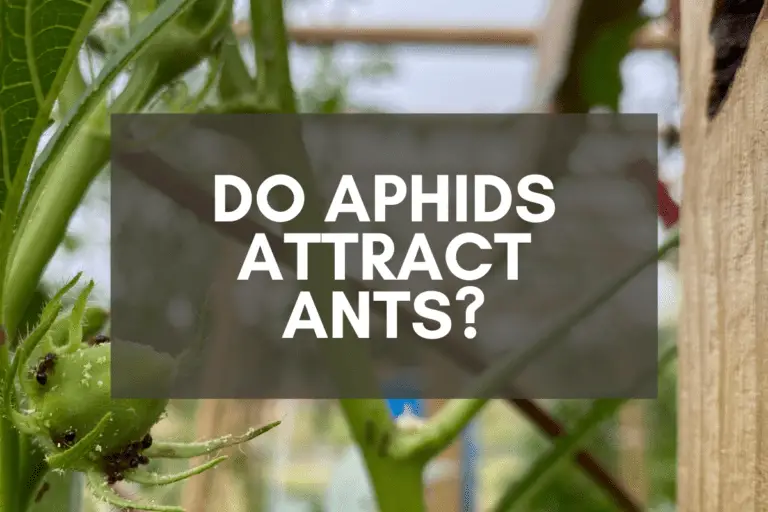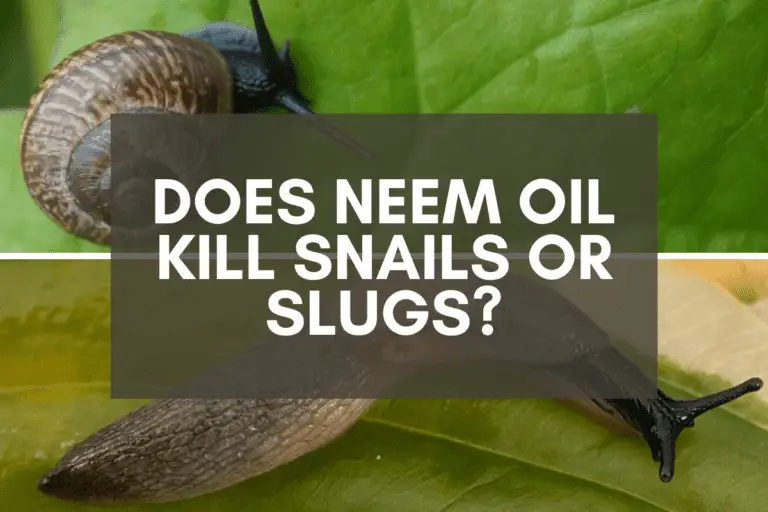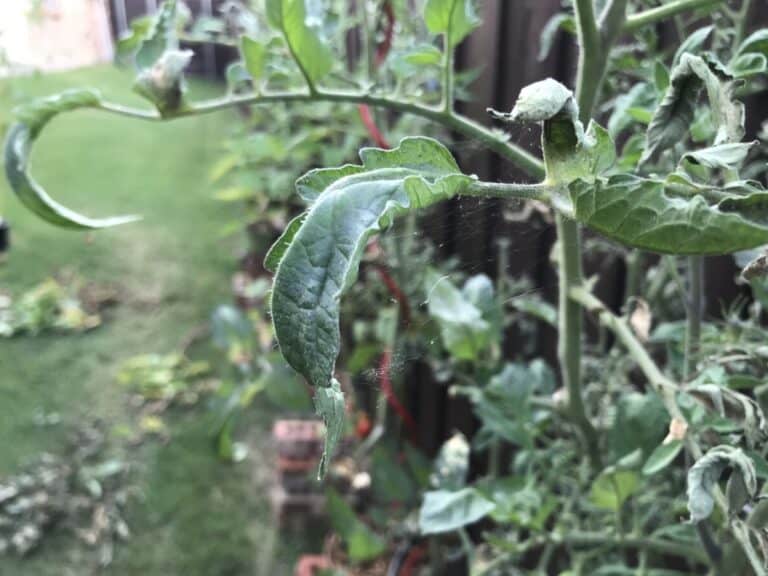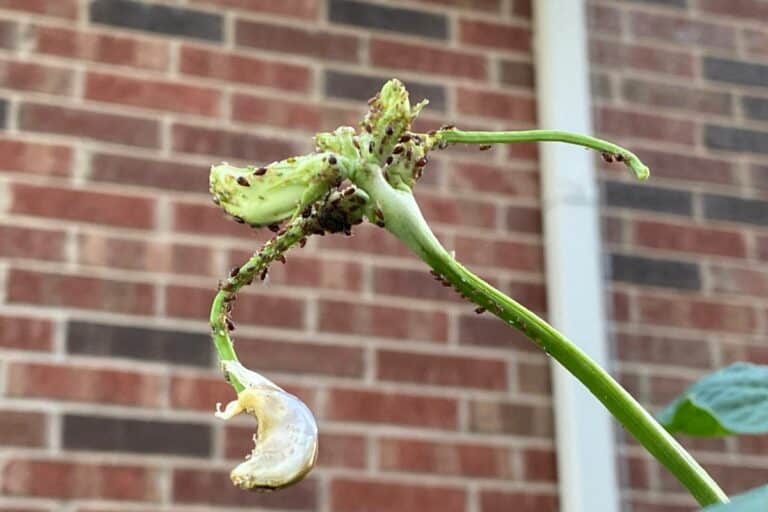Do Marigolds Repel or Stop Spider Mites?
Marigolds have long been prized by gardeners for their ability to attract pollinators and repel certain garden pests (such as nematodes), which makes them a particularly effective companion to plant alongside tomatoes, eggplant, peppers, and other garden favorites.
But have you ever wondered what kind of effect they have on spider mites? Do spider mites like marigolds? Or are they repelled by them?
Long story short, marigolds do not repel spider mites. They attract them. Just to be clear though: Marigolds do not attract spider mites to your garden since spider mites spread easily from place to place. Instead, they attract spider mites that have already arrived in your garden. This is a crucial distinction.
Marigolds serve as a spider mite “trap crop” since they are particularly effective at attracting mites to their foliage. They function as sacrificial decoy plants, temporarily distracting spider mites so that the mites don’t initially attack other, more important garden varieties.
But here’s the key: The marigolds will only distract the spider mites temporarily. If you don’t recognize that you’ve got a looming infestation and treat your plants accordingly, the spider mites will spread from the marigolds to nearby plants and, if left untreated, to the rest of your garden as well.
Why Are Spider Mites Attracted to Marigolds?
I’ve done quite a bit of research to try and figure out why exactly spider mites are drawn to marigolds–even turning to scientific journals in the hope of discovering a few insights–but as far as I can tell, the subject hasn’t been studied, possibly because spider mites are global pests that have been known to infest 200+ plant varieties. So here’s my best guess based on years of experience battling spider mites.
Spider mites are attracted to marigolds because of their abundant, relatively thin leaves, which provide an ideal food source for these chlorophyll-seeking pests. Marigolds hold up well amidst spider mite infestations, which means they can distract spider mites from other, more valuable plants, often for weeks at a time.
As I’ve noted above, gardeners refer to marigolds as a “trap crop” because marigolds attract spider mites to their foliage and thus delay their spread. But the word “trap” is a bit misleading because marigolds don’t trap spider mites at all. If left untreated, spider mites will easily spread to new plants after several weeks.
What marigolds actually do is to buy you time to address a looming infestation. This is why I tend to think of them as a decoy crop, something I’m willing to sacrifice (if necessary) to keep spider mites at bay while I prep a strong neem oil spray and develop a treatment plan to stop the initial infestation before it metastasizes into something much worse.
What Do Spider Mites Look Like on Marigolds?
The easiest way to inspect for spider mites on marigolds is to leap an eye on the plant’s foliage whenever you’re watering your plants or working in the garden. As I’ve noted in this article on recognizing spider mite infestations, a slight stippling effect can be seen on plants after spider mites first arrive.
For instance, take a look at this close-up photo of a marigold that was growing in one of my garden beds this year.

Notice the cluster of tiny, whitish dots (about 50 or so) on that single leaf? And the small area in the center of the leaf where the dots seem to have coalesced and created a pale patchy area? This is what an early spider mite infestation looks like on marigold foliage.
When I turned the leaf over and looked at it through a magnifying glass, I saw a dozen or so little reddish brown specks, which meant that the spider mites had just arrived in my garden. They had had enough time to prick the plant’s foliage and suck out its cellular juices–leaving behind the visible stippling effect–but they hadn’t yet spread to nearby leaves.
I could have started treating my marigolds with soapy water and neem oil to stop the spider mite infestation, but I wanted to see how long it’d take them to spread across the plant, so I temporarily let them be. Within a week or so, they had spread to more than a dozen leaves, and shortly after that, they could be seen all over the marigold, a progression you can see in these two images.

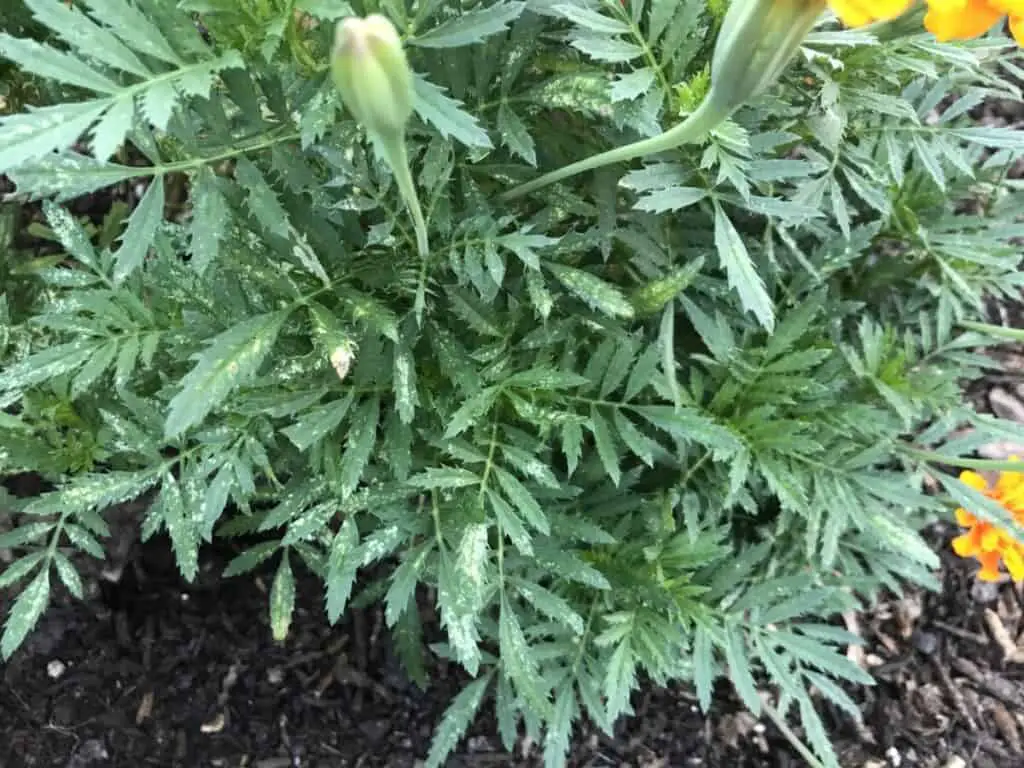
With tomatoes and peppers growing nearby–and on the heels of a disastrous tomato plant experiment that I’ve written about elsewhere on this site–I decided I’d seen enough and began spraying the marigolds with a daily insecticidal soap spray as well as a neem oil spray once every few days. The last thing I wanted was for the spider mites to migrate from the marigolds to other plants in my garden.
What’s interesting about marigolds is how well they seem to handle spider mite infestations. Unlike tomato plants–whose leaves will curl and decay shortly after spider mites arrive–the marigolds in my garden were generally unfazed by the spider mites. Their foliage showed signs of stippling, and I noticed some decay and a few wispy webs, but they held up remarkably well even after spider mites had been hanging out on them for a week or so.
Long story short, marigolds are not going to keep spider mites away from your property, but when the mites arrive, they’ll be distracted by the marigolds, and if you know what you’re looking for, you’ll recognize the early signs of a spider mite infestation and take care of the problem before the mites spread to other plants in your garden.
Do Marigolds Keep Bugs Away?
If you like gardening advice and, like me, you turn to the internet for helpful information about common garden varieties, you’ve likely read something about how marigolds have a seemingly magical ability to repeal all kinds of garden pests–aphids, hornworms, mosquitoes, squash bugs, thrips, whiteflies. The list goes on and on.
What these articles don’t mention is that there’s scant evidence that marigolds have such potent repellent properties. In fact, it appears that most authors who advocate these claims likely mistake a correlation for a causation. Here’s why.
When it comes to repelling harmful garden pests, the roots of certain marigold varieties discharge chemical toxins that prevent the growth of damaging nematodes, but more importantly, marigolds produce copious, vibrantly-colored flowers that attract pollinators and beneficial insects alike (such as assassin bugs, ladybugs, and parasitic wasps). These insects, not the marigolds themselves, work to deter, destroy, and repel numerous destructive garden pests.
And this is why people often mistake correlation for causation. They notice that plants planted within the vicinity of marigolds seem to thrive, and they attribute this thriving to the marigolds’ seemingly repellent qualities. However, given the absence of scientific evidence, it’s highly likely that marigolds are not repelling harmful garden pests at all but are instead attracting the kinds of bugs that keep such pests in check.
What Plants Repel Spider Mites?
As I’ve noted above, marigolds do not repel spider mites. They are instead decoy plants that attract spider mites and thus keep them away from other plants (at least temporarily). However, there are numerous plants that repel spider mites and others that are fairly resistant to spider mite infestations, even advanced infestations that would typically kill other garden varieties.
Some of my favorite spider mite repellent and resistant varieties include:
- Broccoli
- Carrot
- Celery
- Chinese Parsley
- Chives
- Dill
- Garlic
- Kale
- Okra
- Onion
- Radish
- Rosemary
- Scallion
- Shallot
- Thyme
I’ve written extensively about plants that are undeterred by spider mites as well as others that appear to have repellent qualities. If you’re interested in learning more about the subject, take a look at my articles on plants that spider mites like and hate and varieties that resist, repel, and trap spider mites.
What’s the Best Homemade Spider Mite Treatment?
When it comes to stopping spider mite infestations, you’ll see all kinds of advice on the internet about the best ways to do so. Some articles are helpful, others not so much. What I’ve done in a recent article on the best ways to stop, kill, and get rid of spider mites is to collect all of that advice in one place and, given my experience battling spider mites over the years, to sort the good from the bad.
When you look at all available options, you’ll soon realise that some spider mite treatments are much more effective (and cost-effective) than others.
The best homemade spider mite treatments are those made of natural ingredients such as neem oil, essential oils, liquid molasses, liquid seaweed, pyrethrins, or beneficial bacteria. When mixed with water and soapy emulsifiers, these ingredients produce powerful homemade insecticidal sprays.
The nice thing about these homemade treatments is that they can be applied to plants regularly until there are no longer any signs of spider mite infestation. If you’d like to know more about my preferred treatment plan, you can read my step-by-step guide to stopping spider mite infestations.

